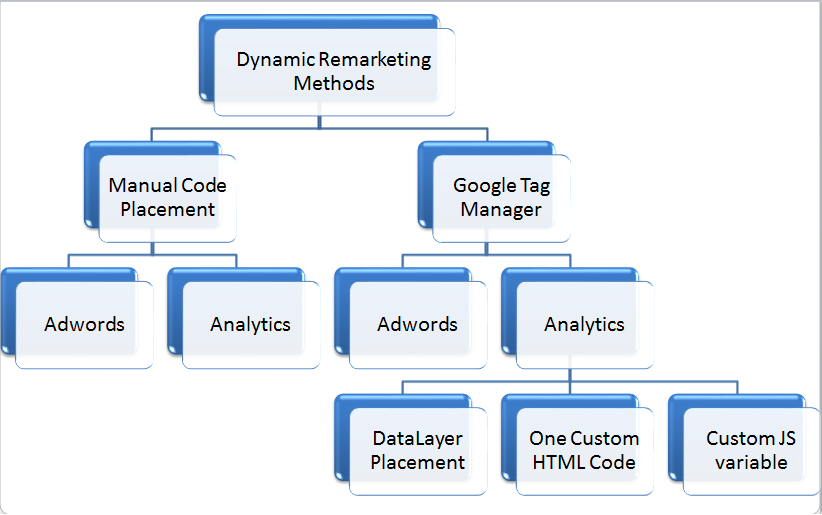Understanding the Power of Remarketing In Google Analytics
Wiki Article
Utilizing Remarketing in Google Analytics: A Comprehensive Overview
Taking advantage of remarketing in Google Analytics provides businesses a tactical edge in getting to out to prospective customers. This guide will drop light on the essential actions involved in utilizing the complete capacity of remarketing in Google Analytics, leading to improved marketing results.Recognizing Remarketing in Google Analytics
Remarketing in Google Analytics allows companies to purposefully target users that have actually formerly interacted with their site or mobile application. By leveraging information from Google Analytics, services can create tailored remarketing checklists based on customer behavior, such as web pages checked out, actions taken, or details objectives achieved. This powerful tool enables services to re-engage with customers who have revealed passion in their services or products, inevitably boosting the likelihood of conversion.Recognizing the various sorts of remarketing approaches is vital for an effective project - What Is “Remarketing” In Google Analytics?. Google Analytics uses various choices, including conventional remarketing, dynamic remarketing, and remarketing listings for search advertisements (RLSA) Each kind serves an one-of-a-kind objective and can be tailored to meet specific advertising goals
Moreover, analyzing the efficiency of remarketing campaigns is essential for maximizing outcomes. Google Analytics supplies useful understandings right into the performance of various remarketing approaches, allowing organizations to make data-driven decisions and fine-tune their targeting technique. By continually keeping track of and changing remarketing initiatives based on analytics information, businesses can make best use of ROI and drive success in their advertising and marketing initiatives.
Establishing Remarketing Projects

After establishing target market listings, the next step is to link Google Analytics with Google Advertisements. By connecting these two systems, companies can effortlessly transfer target market listings from Google Analytics to Google Ads for remarketing objectives. This combination permits for more exact targeting and better project performance.
As soon as the accounts are connected, services can produce remarketing projects in Google Ads utilizing the target market lists previously defined in Google Analytics. These campaigns can be personalized with particular advertisement creatives, messaging, and bidding approaches to effectively re-engage with previous site visitors and drive conversions. By adhering to these steps, organizations can take advantage of the power of remarketing to improve their marketing initiatives and raise ROI.
Making Use Of Target Market Segmentation Approaches

Predefined sections in Google Analytics permit you to quickly assess common target market classifications like brand-new customers, returning users, or individuals who completed a specific objective on your website. Customized sections, on the various other hand, enable you to produce unique sectors based upon details requirements that are essential to your service objectives. Dynamic remarketing lists instantly change based on individual actions, showing individualized advertisements to users that have actually communicated with your site in specific ways.
Analyzing Remarketing Efficiency Metrics
this contact form Upon evaluating the efficiency of remarketing projects in Google Analytics, the analysis of crucial efficiency metrics supplies important insights into audience involvement and conversion rates. By diving into metrics such as click-through rates (CTR), conversion prices, cost per procurement (CPA), and return on advertisement spend (ROAS), marketing experts can assess the success of their remarketing initiatives. CTR indicates the percent of users that clicked the ad after seeing it, mirroring the advertisement's relevance and charm. Conversion prices gauge the percent of individuals who finished a wanted action, such as buying, after clicking on the ad. CPA reveals the ordinary expense incurred for each and every conversion, helping analyze campaign earnings. ROAS, on the various other hand, quantifies the earnings generated for every single dollar invested in advertising and marketing. Analyzing these metrics enables marketing experts to optimize projects, improve audience targeting, and allocate budget plans efficiently to enhance overall remarketing performance.Optimizing Remarketing Strategies
When refining remarketing approaches in Google Analytics, focusing on target market division is extremely important for attaining project success. By dividing your audience right into particular sectors based on their actions, demographics, or passions, you can customize your ads extra successfully to every group. This targeted approach raises the probability of involving users who have actually currently revealed interest in your solutions or products, resulting in greater conversion rates.Another vital facet of enhancing remarketing techniques is continually testing and refining your projects (What Is “Remarketing” In Google Analytics?). A/B testing various advertisement creatives, messaging, or offers can aid you determine what resonates best with your target market and drives the most conversions. By analyzing the performance of these examinations in Google Analytics, you can make data-driven decisions to enhance your remarketing efforts further
Additionally, leveraging dynamic remarketing can substantially boost your campaign results. This feature permits you to reveal personalized ads to customers based on their previous interactions with your internet site, showcasing products or solutions they have formerly checked out. By providing customized web his response content to users based on their behaviors and interests, vibrant remarketing can aid enhance interaction and drive conversions.
Verdict
Finally, harnessing remarketing in Google Analytics is a strategic technique to target customers that have actually previously involved with a site. By developing customized target market checklists and using target market segmentation strategies, businesses can maximize remarketing advocate enhanced conversion prices. Assessing efficiency metrics and continually optimizing methods are essential for making the most of the performance of remarketing initiatives.Google Analytics uses different alternatives, consisting of typical remarketing, dynamic remarketing, and remarketing lists for search ads (RLSA)After setting up audience lists, the next action is to link Google Analytics with Google Ads. By linking these 2 systems, services can flawlessly move target market listings from Google Analytics to Google Advertisements for remarketing objectives.Once the accounts are connected, services can develop remarketing projects in Google Ads making use of the target market notes previously specified in Google Analytics.When refining remarketing techniques in Google Analytics, focusing on audience division is paramount for achieving project success.
Report this wiki page